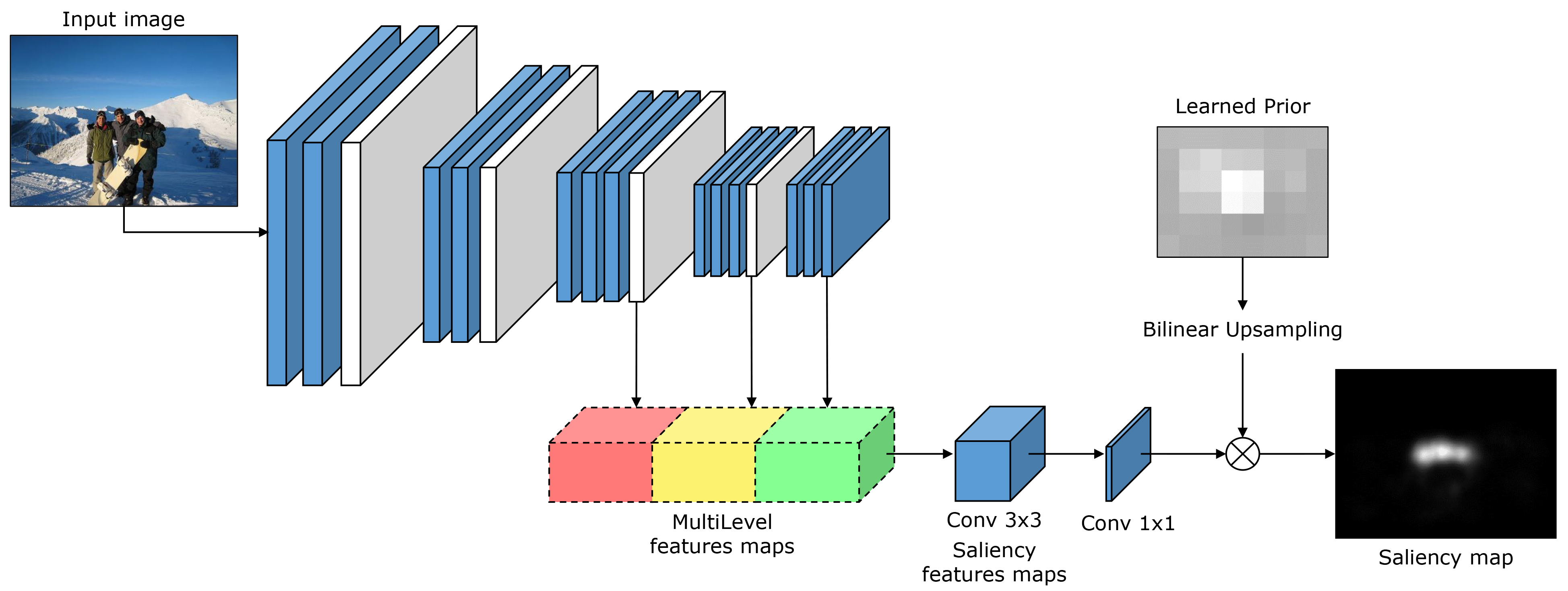This repository contains reference code for computing Multi-Level Net (ML-Net) saliency maps based on the following paper:
Marcella Cornia, Lorenzo Baraldi, Giuseppe Serra, Rita Cucchiara. "A Deep Multi-Level Network for Saliency Prediction." In Proceedings of the 23rd International Conference on Pattern Recognition, 2016.
Please cite with the following Bibtex code:
@inproceedings{mlnet2016,
author = {Cornia, Marcella and Baraldi, Lorenzo and Serra, Giuseppe and Cucchiara, Rita},
title = {{A Deep Multi-Level Network for Saliency Prediction}},
booktitle = {International Conference on Pattern Recognition (ICPR)},
year = {2016}
}
An arXiv pre-print is available at this link.
This paper presents a novel deep architecture for saliency prediction. Current state of the art models for saliency prediction employ Fully Convolutional networks that perform a non-linear combination of features extracted from the last convolutional layer to predict saliency maps. We propose an architecture which, instead, combines features extracted at different levels of a Convolutional Neural Network (CNN). Our model is composed of three main blocks: a feature extraction CNN, a feature encoding network, that weights low and high level feature maps, and a prior learning network. We compare our solution with state of the art saliency models on two public benchmarks datasets. Results show that our model outperforms under all evaluation metrics on the SALICON dataset, which is currently the largest public dataset for saliency prediction, and achieves competitive results on the MIT300 benchmark.
To compute saliency maps using our pre-trained model:
python main.py test path/to/images/folder/
where "path/to/images/folder/" is the path of a folder containing the images for which you want to calculate the saliency maps.
To train our model from scratch:
python main.py train
Beside, it is necessary to set parameters and paths in the config.py file.
- Weights VGG-16: vgg16_weights.h5
- Weights ML-Net SALICON: mlnet_salicon_weights.pkl
Note: Be sure to have "image_dim_ordering": "th" and "backend": "theano" in your keras.json file.
We provide saliency maps predicted by our network for two standard datasets:
A PyTorch re-implementation of our model is available at https://github.com/immortal3/MLNet-Pytorch.
For more datails about our research please visit our page.
If you have any general doubt about our work, please use the public issues section on this github repo. Alternatively, drop us an e-mail at mailto:[email protected] or mailto:[email protected].



